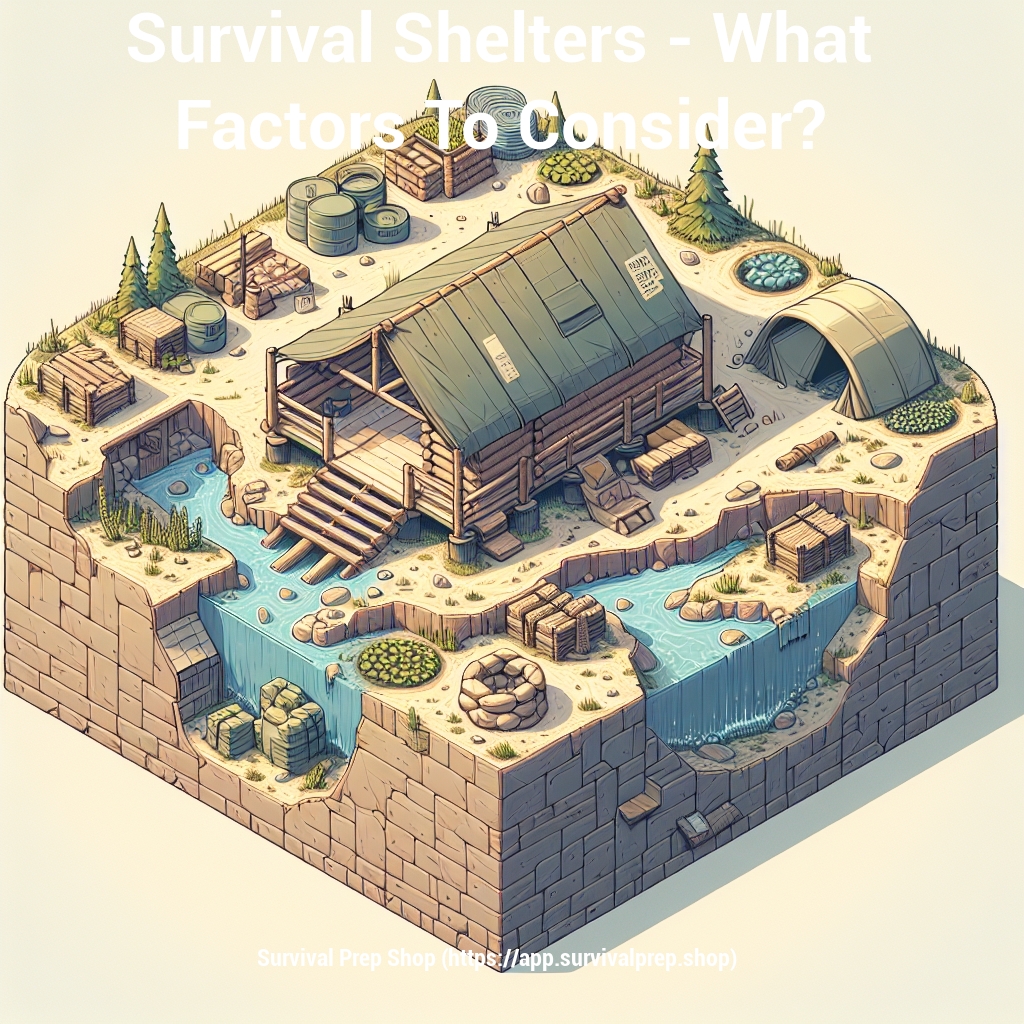
Hello everyone, and welcome to the Survival Prep Shop.
My name is TK, and it's my pleasure to welcome you to our shared exploration of preparedness and resilience group.
As we delve into today's topic, please bear in mind that these words are a blend of my own thoughts and life lessons.
Setting up a survival shelter is always on the list of things to do. Preppers may or may not choose to hunt for a bug-out shelter. Are you okay with the idea of taking refuge in your home when a disaster hits? No problem! The theory behind putting together a shelter is to stay safe and protected.
A house as your shelter option works wonders if a few factors have been ticked off. Did you know that most constructions in California are equipped to survive through earthquakes? Florida homes are exquisitely built to combat the impacts of hurricanes. The point is – if houses are in areas that are prone to natural calamities of any kind, they must be equipped and constructed keeping this in view.
Encountering damages during a disaster is the last thing a prepper prepares for. Makes sense, right? Wondering what other factors should you keep an eye on?
- Location: It is no surprise that spotting the right location is essential when you are fixing upon survival shelters. Homes or bug-out spots, the objective is to stay protected. Being far from pokey neighbors is a bonus. Choosing locations to set up your shelter is very similar to picking out camping spots. Think about it – is it a good idea to camp in and around mangroves or slippery trails when the site experiences too much rain and floods? No! Take into consideration all environmental factors before you put up a place to take refuge in.
- How sustainable is the shelter? Are you planning to stay in your bug-out den for a night to explore the wilderness? You may as well skip thinking about sustainability if it is a short adventurous stay. Preppers, on the other hand, prepare for longer timelines. You must ensure that the space is safe, durable, and comfortable enough to reside and lay off for a few days. A shelter is not about having a sturdy roof only. The space will be your den for as long as the crisis lasts. It must be secure, have fencing around, but most importantly, comfortable enough to recline and survive through the disaster. You must have a stockpile of food and other essential supplies to bank upon. Having access to water to natural produce is a bonus.
- Are resources readily available and handy? Do you have an alternative source of water in and around your shelter? Running out of stocked water is easier than you think. Having a natural resource available is a good option. Is there a patch of land to farm and grow organic produce? Self-reliance is key in the life of a prepper. The population of the area so you can count the number of people depending on the available natural resources up for grabs.
- Security and safety: Doesn’t matter how much money you have spent in building a fancy and strong shelter. The shelter is of no good if it is not secure. Running tight on security is a must. Set up perimeter alarms, fences, security alarms, and yard signs to ensure that yours is a protected space. No one can trump in and threaten the safety of you and your family. Don’t overlook comfort when you are setting up a survival shelter. A shelter must keep you at bay from nature’s harmful elements, but it cannot be a cardboard box. Hone the skills to create a comfy and sturdy shelter.
As we come to the end of our journey today, I hope my words have offered you some valuable insights. Your company on this path is always appreciated. Thank you for reading, and keep staying prepared.
Thanks again.
TK – Survival Prep Shop
